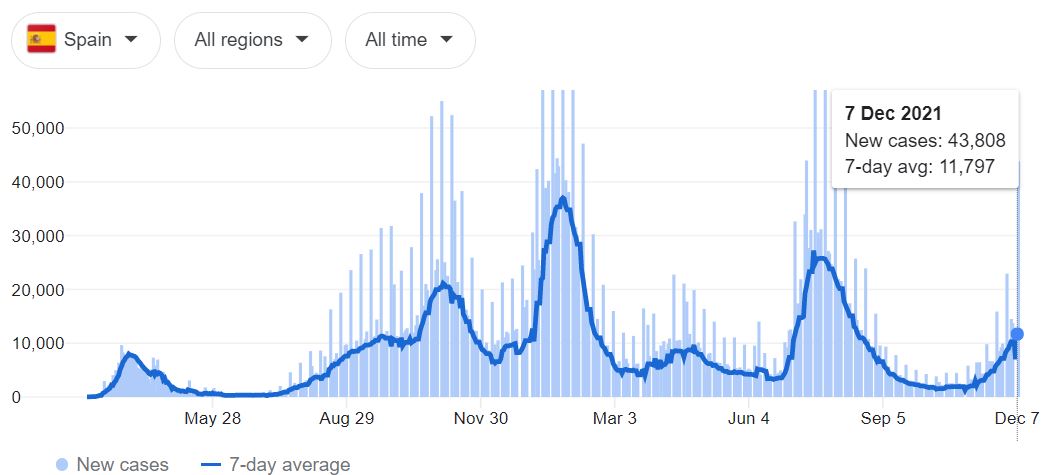Spain has reopened for EU and overseas tourists (including vaccinated Americans).
Read on to learn about the restrictions for high-risk countries.
Related:
– Italy to start reopening for tourism on June 2
– France open for tourism – Current restrictions
– Greece to start opening for tourism in May 2021
Disclaimer: Travel restrictions and governmental regulations can change rapidly and the information below might be outdated within a few hours. Therefore, double-check all information with your embassy or on official websites. Traveling Lifestyle does not take any responsibility for your decision to travel.
Spain Reopening – Latest Updates
December 8 – Spain has strengthened restrictions for Southern African Countries
Starting December 6, all visitors arriving from Botswana Eswatini, Swaziland, Lesotho, Mozambique, Namibia, South Africa and Zimbabwe must present a negative COVID-19 test taken 72 hours prior to departure, regardless of travelers’ vaccination status or citizenship.
“If you come from a high-risk country, to pass the health controls upon arrival in Spain you will have to present, regardless of whether you have a vaccination or recovery certificate, your SpTH QR code along with a SARS-CoV-2 diagnostic test certificate, with a negative result,” announced the Spanish authorities.
Quarantine is still not required.
Read our full post: Spain Announces Additional Entry Restrictions Over Omicron Variant
Is Spain open to Americans?
Vaccinated Americans are allowed to visit Spain for tourism from June 8. Unvaccinated ones have been barred from entering.
Is it safe to travel to Spain right now?
Spain is experiencing another Covid-19 wave due to a spread of the Delta variant and therefore is a “red zone” for many countries.
Third-party “safe” countries (Current from Dec. 6 to Dec. 12)
- Argentina
- Australia
- Bahrain
- Canada
- Chile
- China
- Colombia
- Hong Kong
- Indonesia
- Kuwait
- Macao
- New Zealand
- Peru
- Qatar
- Rwanda
- Saudi Arabia
- South Korea
- Taiwan
- United Arab Emirates
- Uruguay
What are the entry restrictions to enter Spain?
- Fill out the travel form named Spain Travel Health (SpTH) and,
- Submit a COVID-19 test if the traveler is not on the low-risk list
- Proof of vaccination (mandatory in most cases)
What is the current COVID-19 situation in Spain?
As of December 8, Spain has reported 5,246,766 positive COVID cases and 88,237 people have lost their lives to the virus.


